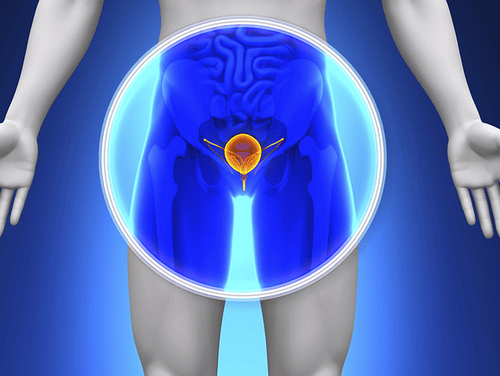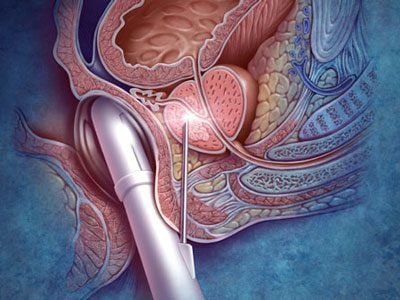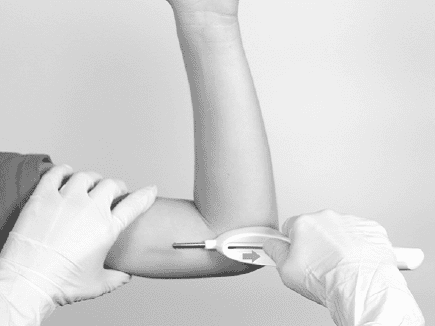This is an automatically translated article.
Article by Master, Doctor Nguyen Van Khanh - Pathologist - Laboratory Department - Vinmec Times City International Hospital
When the prostate is biopsied, the specimen is studied under a microscope by a pathologist. The pathologist will send your doctor the results of the diagnosis. The information in the pathology results will help the doctor make the right care plan. The questions and answers below can help you understand the medical language you often see in your prostate biopsy pathology results
1. What does the biopsy result mean by the word “core”?
The most common type of prostate biopsy is a core biopsy. For this test, the doctor inserts a thin, hollow needle into the prostate gland. When the needle is withdrawn, a cylindrical piece of prostate tissue called the "core" is removed. This is usually repeated several times to take tissue samples from different areas of the prostate.
Your pathology results will list each “core” numerically (or alphabetically) by your pathologist, with each core (biopsy) having a unique diagnosis. If cancer or other abnormalities are found, it's usually not in all cores, so you should check all cores to see what's going on with you.
2. What is prostate intraepithelial neoplasia (PIN)?
In this disease, there are changes where abnormal cells develop unlike cells in other parts of the prostate. Based on the abnormal cell composition, they are divided into:
Low-grade intraepithelial neoplasia (low-grade PIN): Prostate cell composition has a near-normal appearance Intraepithelial neoplasia Elevated prostate (Elevation PIN): The cellular composition is more abnormal in appearance Prostatic intraepithelial neoplasia begins to appear in the prostate gland in some men in their 20s. Nearly half men with prostate intraepithelial neoplasia by age 50. High-grade intraepithelial neoplasia is considered a precancerous lesion of the prostate because it can progress to cancer prostate gland over time. In general, low-grade prostate intraepithelial neoplasia should not be reported on biopsy because it is not significant.
If I have high grade intraepithelial neoplasia, does that mean it will progress to prostate cancer? No. Most cases of high-grade intraepithelial neoplasia will not progress to cancer in the next several years. However, the risk of later cancer is higher if there is high-grade intraepithelial neoplasia in multiple core biopsies.
What does this mean if my biopsy shows only high-grade intraepithelial neoplasia, but no cancer? This means that there is no cancer on the biopsy sample. In most cases, a repeat biopsy will also show no cancer. Do I need to have a prostate biopsy again one year or a few years after being diagnosed with high-grade intraepithelial neoplasia?
In most cases the chance of finding cancer is low, so re-biopsy early after diagnosis of prostate intraepithelial neoplasia is not helpful. However, some patients are at high risk, such as men with multiple core biopsies containing high-grade intraepithelial neoplasia. Talk to your doctor about this.

3. What is intraductal carcinoma of the prostate?
Intraductal carcinoma of the prostate is a malignant lesion characterized by proliferation of malignant cells confined to the lumen. It often appears next to advanced prostate cancer lesions.
What does this mean if there is intraductal carcinoma in addition to high-grade prostate cancer on my biopsy? In this case, intraductal carcinoma is not significant and will not change your outcome or treatment or prognosis.
What does this mean if there is intraductal cancer on my biopsy but no prostate cancer? In this case, some doctors will recommend treatment, such as surgery or radiation therapy, because intraductal carcinoma is often associated with advanced prostate cancer. Some other doctors may choose to do a repeat biopsy to try to find high-grade cancer before starting treatment. Diagnosing intraductal carcinoma is difficult for the pathologist, so you may want to consider getting a second opinion in this case. You should discuss treatment options with your doctor if your biopsy shows intraductal carcinoma without the usual prostate cancer.
What does this mean if my biopsy results show acute inflammation (acute prostatitis) or chronic inflammation (chronic prostatitis)? Most cases of prostatitis reported on biopsy are not due to infection and do not require treatment. In some cases, inflammation increases PSA, but is not associated with prostate cancer.
What does this mean if the biopsy results refer to atrophy, adenopathy, or atypical adenoma hyperplasia? All of these terms refer to lesions that the pathologist finds under the microscope to be benign (not cancerous), but they can sometimes look cancerous under the microscope.
Atypical adenomatous hyperplasia (sometimes called adenomatous disease) is another benign condition that can sometimes be seen on prostate biopsies.
4. What does it mean if my biopsy mentions seminal vesicles?
The seminal vesicles are glands located just behind the prostate gland. Sometimes part of the seminal vesicle is also removed during the biopsy. This is not a matter of concern.What does this mean if the biopsy results refer to special tests such as high molecular weight cytokeratin, CK903, CH5/6, P63, P40, AMACR, 34BE12, PIN4 cocktail, or ERG? These are special tests that pathologists sometimes use to diagnose prostate cancer. Not all patients need these tests, as whether or not your biopsy results refer to these tests will not affect the accuracy of your diagnosis.
Vinmec International Hospital Radiation Center has routinely performed radiotherapy for prostate cancer on the most advanced Clinac iX accelerator system (Varian Company, USA) today. Many patients achieve satisfactory results with few side effects, often making a full recovery after treatment. The clinics are fully equipped with high-tech and standard equipment, ensuring that patients are monitored, examined, and cared for comprehensively before, during and after radiation therapy.
Please dial HOTLINE for more information or register for an appointment HERE. Download MyVinmec app to make appointments faster and to manage your bookings easily.
Source: American Cancer Society













